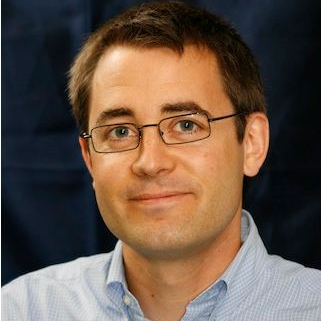Advances in Object-Based Image Analysis—Linking with Computer Vision and Machine Learning
A special issue of Remote Sensing (ISSN 2072-4292).
Deadline for manuscript submissions: closed (1 January 2017) | Viewed by 126233
Special Issue Editors
Interests: disaster risk management; damage assessment; vulnerability; UAV; resilience; recovery; OBIA; object-oriented analysis; VGI
Special Issues, Collections and Topics in MDPI journals
Interests: airborne and close-range photogrammetry; geometry and semantic analysis; terrestrial and mobile laser scanning
Special Issues, Collections and Topics in MDPI journals
Interests: remote sensing; image analysis; image processing; computer vision; machine learning; pattern recognition
Special Issues, Collections and Topics in MDPI journals
Special Issue Information
Dear Colleagues,
During the last 10 years the GEOBIA community has grown from a niche discipline to a recognized and vibrant branch of geoinformation science, and methods developed by the growing community have helped to tackle problems in virtually all domains where geographic data are used. The growing importance of image processing, be it of traditional airborne or satellite data, or complex hyperspectral data stacks, videos, or image data used by other communities, has resulted in a multitude of methodological approaches. Object-based approaches have turned out to be an excellent way to incorporate process and feature knowledge, in addition to providing an effective way of dealing with multi-scale data. As a consequence, hundreds of scientific publications have greatly enriched the geoinformation science domain over the past decade. Following a range of very successful biennial conferences, the GEOBIA 2016 conference took place from 14-16 September at the University of Twente in Enschede, the Netherlands. It focused on two broad issues where more progress is needed: (i) Solutions: while GEOBIA has undoubtedly advanced our understanding of a wide range of environmental processes or anthropogenic activities, many studies are marked by great technical complexity, a reliance on proprietary software, and have resulted in methods and procedures that are difficult to replicate and use for non-expert stakeholders. Especially in countries with limited resources and great environmental challenges, GEOBIA has to date only played a minor role in actual problem solving, which was addressed by the conference. GEOBIA 2016 also included a benchmarking effort, connected to an ongoing ISPRS initiative, aimed at stimulating the development of optimized, generic and transferable methods for standard GEOBIA problems. (ii) Synergies: Segmentation-based analysis is not an exclusive GEOBIA domain. On the contrary, such methodological approaches play a vital role in the biomedical and pharmaceutical communities already mentioned, but also feature very strongly in the computer vision domain. Object-based analysis is as critical to the analysis of lidar or image-derived point clouds as to the processing of satellite images. As such, those domains have a lot to share with the GEOBIA field, and vice versa. A core effort of GEOBIA 2016 was to find synergies between the disciplines that share an interest in object-based data processing.
This Special Issue will primarily feature selected papers from the GEOBIA 2016 conference. Authors wishing to have their work considered for this issue, including those not able to present at the conference, should contact the guest editors.
Authors are required to check and follow the specific Instructions to Authors, https://www.mdpi.com/journal/remotesensing/instructions.
Dr. Norman Kerle
Dr. Markus Gerke
Prof. Dr. Sébastien Lefèvre
Guest Editors
Manuscript Submission Information
Manuscripts should be submitted online at www.mdpi.com by registering and logging in to this website. Once you are registered, click here to go to the submission form. Manuscripts can be submitted until the deadline. All submissions that pass pre-check are peer-reviewed. Accepted papers will be published continuously in the journal (as soon as accepted) and will be listed together on the special issue website. Research articles, review articles as well as short communications are invited. For planned papers, a title and short abstract (about 100 words) can be sent to the Editorial Office for announcement on this website.
Submitted manuscripts should not have been published previously, nor be under consideration for publication elsewhere (except conference proceedings papers). All manuscripts are thoroughly refereed through a single-blind peer-review process. A guide for authors and other relevant information for submission of manuscripts is available on the Instructions for Authors page. Remote Sensing is an international peer-reviewed open access semimonthly journal published by MDPI.
Please visit the Instructions for Authors page before submitting a manuscript. The Article Processing Charge (APC) for publication in this open access journal is 2700 CHF (Swiss Francs). Submitted papers should be well formatted and use good English. Authors may use MDPI's English editing service prior to publication or during author revisions.
Related Special Issue
- Geographic Object-Based Image Analysis (GEOBIA) in Remote Sensing (3 articles)







